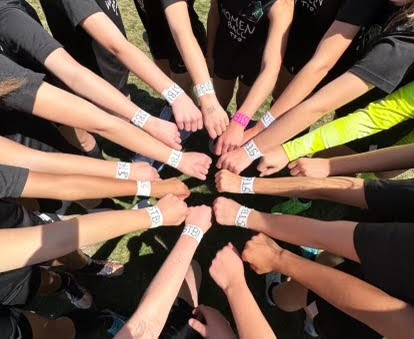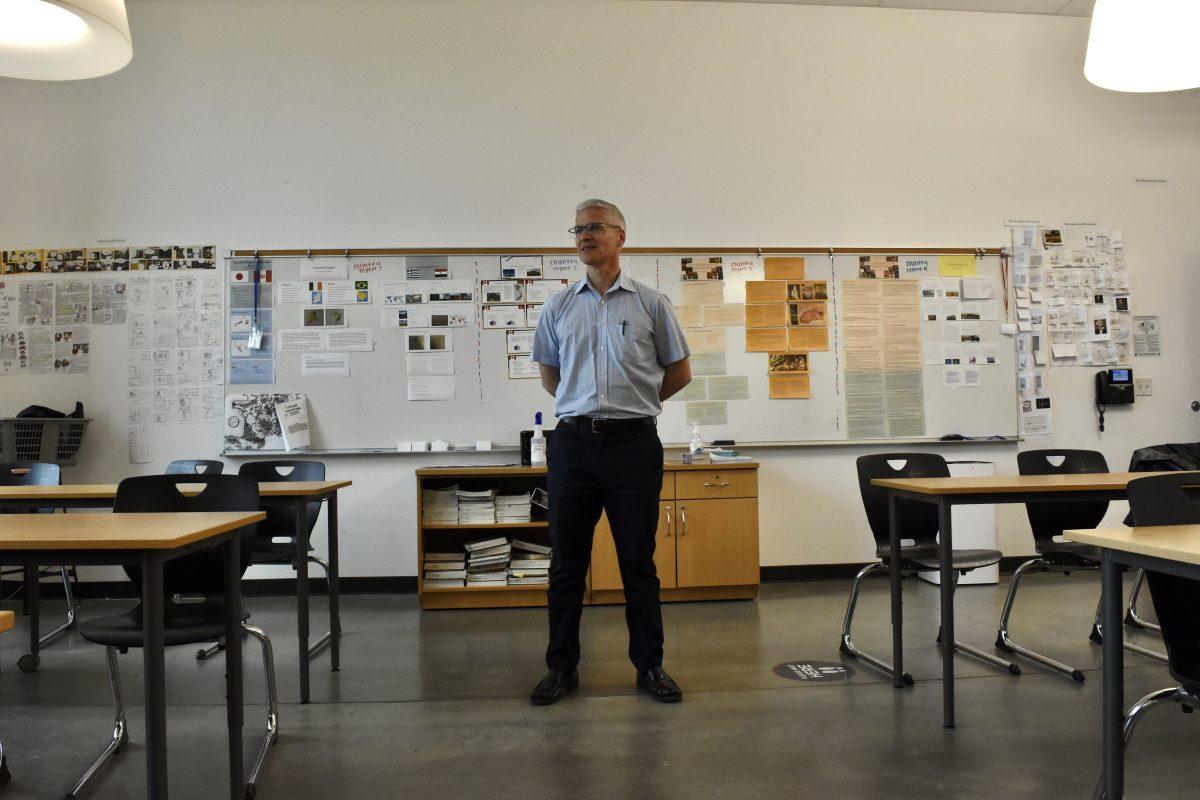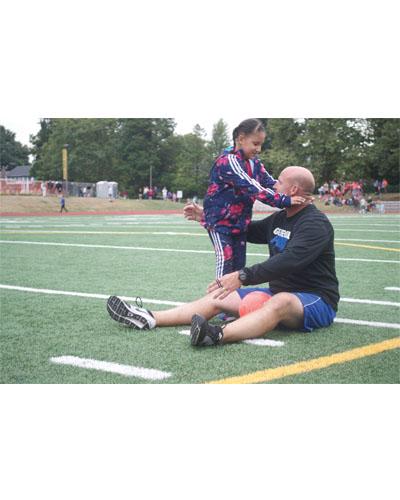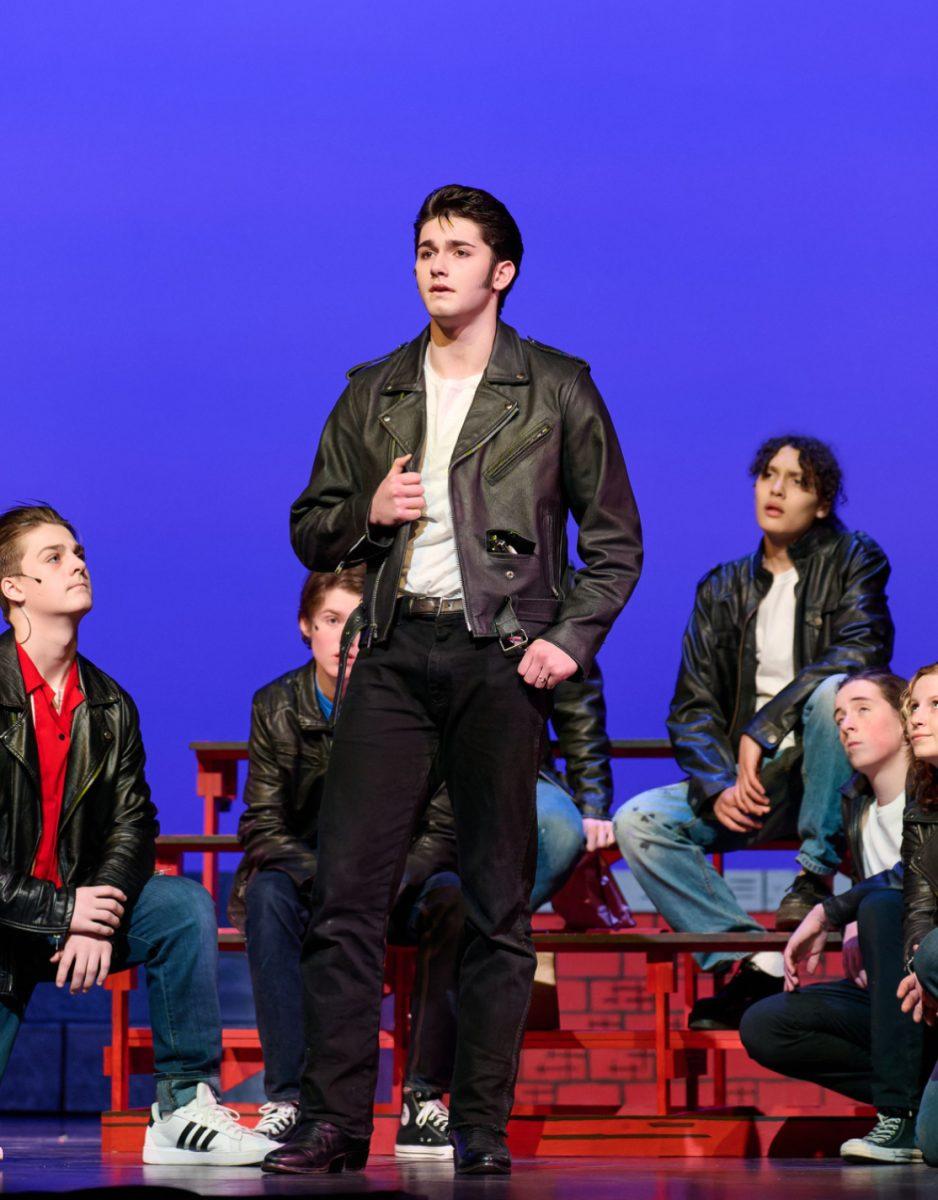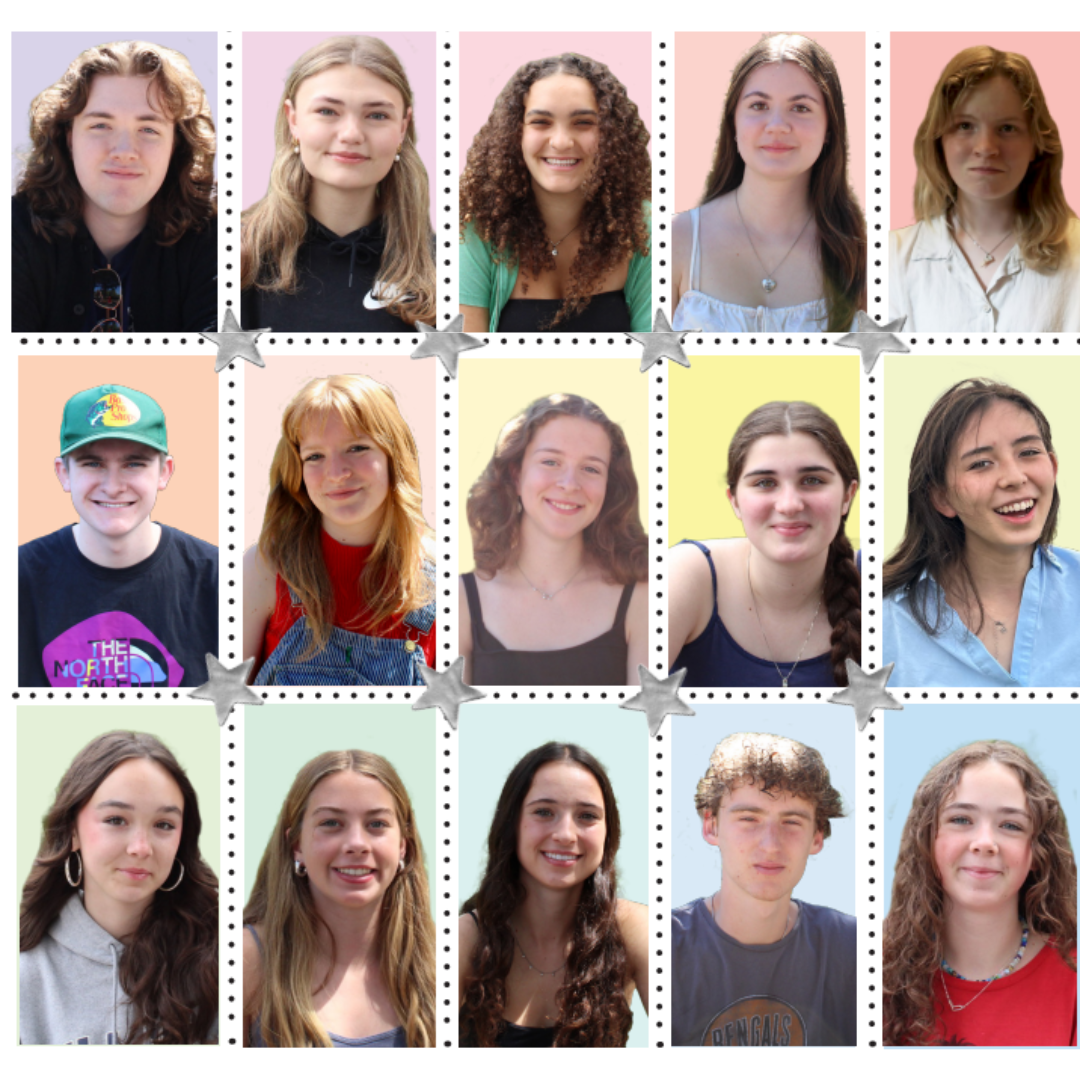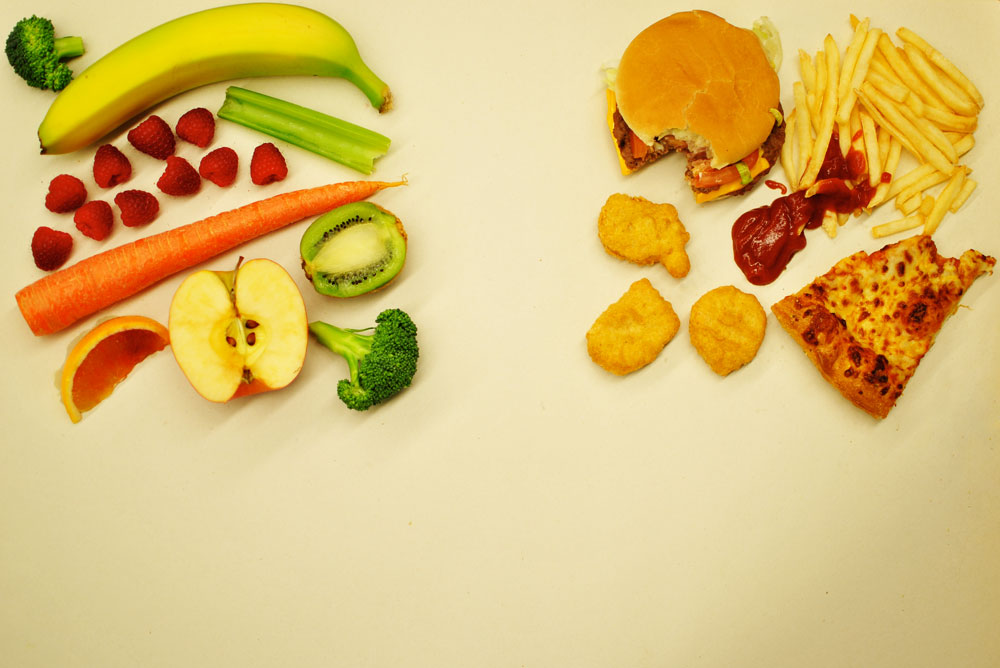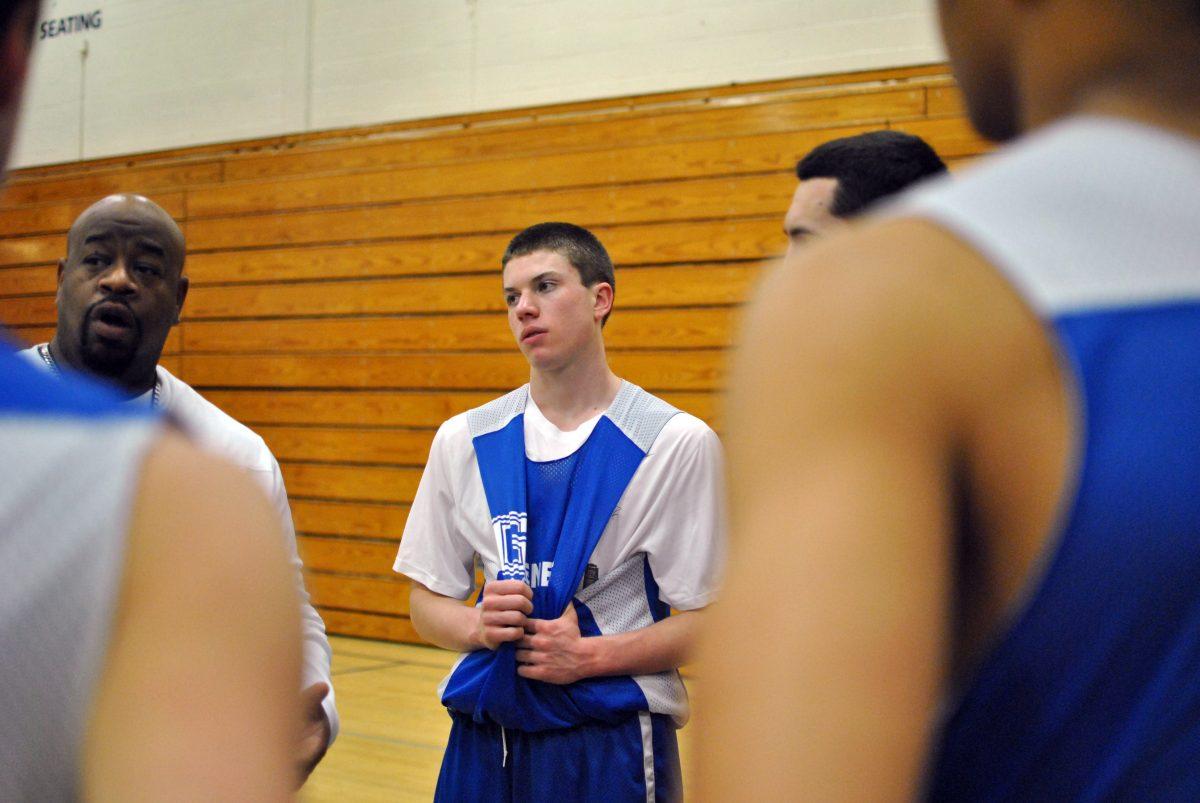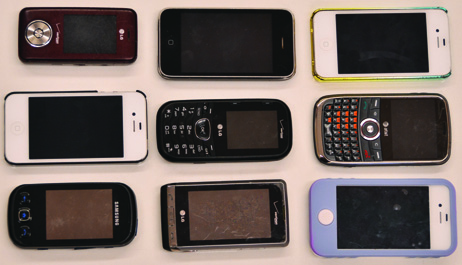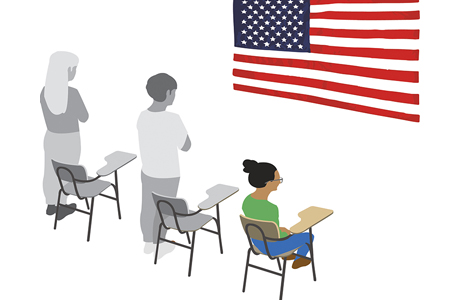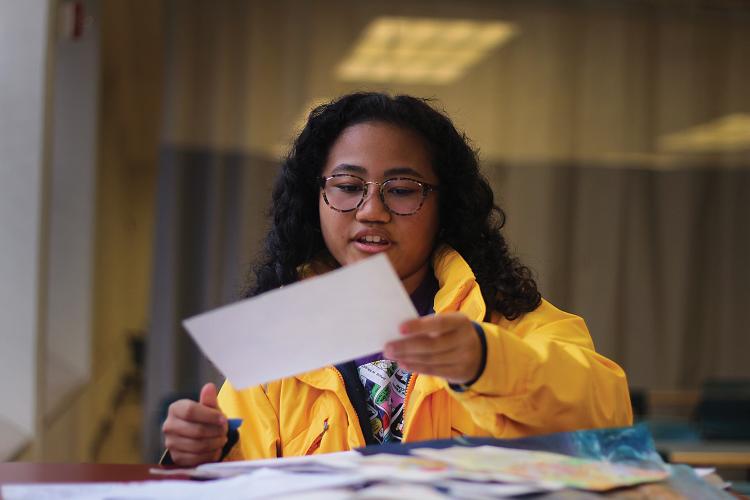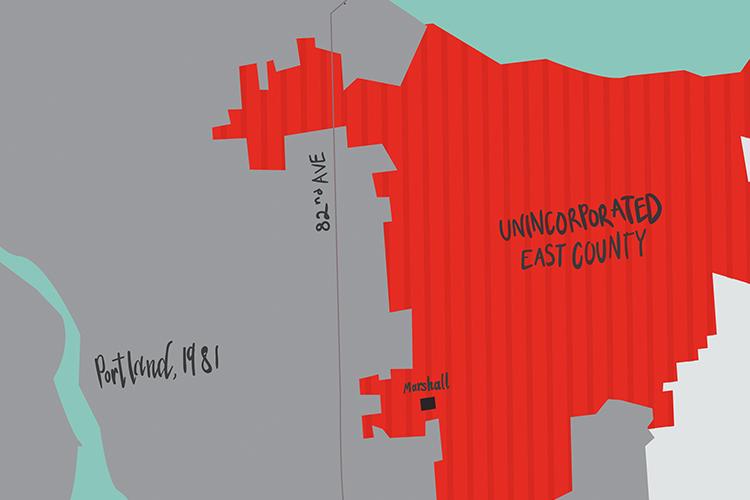McChickens and soda. For freshman Henry Soltvedt and his friends, it’s a weekly ritual.
“I would say that we eat here about three or four days a week; it might not be the best food but it’s cheap and easy to walk to,” says Soltvedt.
At Grant High School, students have 40 minutes for lunch to spend however they please. Some descend into Grant’s basement cafeteria, some sit in the hallways to eat homemade lunches, while others head out in groups to nearby eateries like McDonald’s, Starbucks or QFC.
According to the Centers for Disease Control and Prevention, one-third of American school-age kids are overweight, and the number of obese kids has tripled in the past 30 years. Kids who are overweight are more likely to have health problems in the future such as diabetes, cardiovascular disease, and cancer.
At Grant, some kids spend up to $25 a week eating off-campus lunch. But since most of the food places near the school don’t offer the healthiest options, kids end up eating what they shouldn’t. High school students don’t want to think about the long-term consequences of what they put into their bodies. With lines consistently out the door at places like McDonald’s and Blind Onion, the question is: do these teenagers care?
During one recent lunch, Soltvedt and his friends walked over to McDonald’s where a lunch-time cashier estimates they serve about 120 Grant students every day. Once he got to the front of the long line, Soltvedt ordered his inexpensive McChicken and super-sized soda.
“I know it’s not the most healthy thing, but it’s easy and tastes good and there aren’t a lot of other options,” he says.
For the McDonald’s regulars, New Seasons nutritionist Christi Reed says it’s important to change it up for healthier options. “If you want to get fried chicken one day, maybe a couple other days that week get a salad,” she says. “If you’re going to McDonald’s, at least get an apple to go along with it, so you’re getting something fresh.”
Many freshmen enjoy the freedom of off-campus lunch that comes with high school. “It gives me more variety of where to eat from,” freshman DeAngelo Dunbar says.
Junior Taran Bradley eats off-campus every single day, spending $20 to $25 of his allowance on lunch every week. This amounts to about $90 a month and over $800 per school year. His favorite places to eat are My Canh, QFC, McDonald’s and Baja Fresh.
Bradley’s mom, LaShonda, says she knows that her son eats off campus a lot. To balance this, she tries to implement healthy eating habits at home. “But it can be hard because Taran doesn’t really like eating veggies,” she says.
The family tries to eat homemade meals as much as possible, including plenty of fruits and vegetables in their dinners. “I took a nutrition class, so I am aware how unhealthy fried food is and I sort of worry,” says LaShonda Bradley.
For freshman Molly McGraw, once she hears the bell ring for lunch, she pulls out her iPhone, calls a friend and heads straight upstairs. After dumping her backpack into her locker, she grabs the brown paper bag containing her lunch.
Two years ago, McGraw was diagnosed with celiac disease, a biological condition that prevents her from eating gluten – a protein composite found in foods processed from wheat and other related grains. She can no longer consume food that contains gluten, such as bread, pasta, cookies, or cereal. If she did eat foods like these, they would cause her intestines to break down.
Since her diagnosis, McGraw brings her own lunch to school. Packed by her mother, lunch usually contains a sandwich on Udi’s gluten-free bread, carrots, and a gluten-free trail mix bar. Though having celiac has caused McGraw to watch what she eats, even if she didn’t have the condition she says it would still be important to her family to eat healthy food.
McGraw tries not to judge her friends’ eating habits, but she still thinks some of their choices are truly awful. “I realize it is their decision so it shouldn’t be my problem,” McGraw says. “I just feel bad when I see them walking into McDonald’s every day.”
For McGraw, she says her parents and their healthy eating habits have really affected her food choices.
“Parents are the ones that tell you what’s right and what’s wrong,” she says. “If you grow up eating McDonald’s all the time then that is what is going to be the norm. Luckily, my parents are healthy eaters.”
Not wanting to be left behind by her friends, McGraw sometimes takes her brown bag lunch and walks with a group of people to go off-campus. While her friends are ordering french fries, fried rice or spring rolls, McGraw sits down in a booth and opens her cellophane-wrapped sandwich.
Students with diet restrictions aren’t the only ones who bring a lunch from home. Senior Ada Harris says she thinks it’s a lot healthier to bring a lunch from home because you can choose what goes into it. “I don’t think I’ve ever eaten off-campus for lunch. I’ve never eaten in the cafeteria.”
Harris makes her own lunch every night before school, usually a piece of fruit and a wheat bread sandwich with Tillamook cheddar cheese, lettuce and tomato.
Like Harris, many Grant athletes rely on home-made lunches in order to stay healthy and get the nutrients they need.
“As a cross-country runner, I try to be aware of what I’m eating in terms of fruits and veggies: foods that are going to give me energy and not sit in my stomach,” says sophomore Libby Kokes. “For lunch, I like grapes and carrots and a peanut-butter and jelly (sandwich) and a piece of a quinoa bagel.”
Many Grant students only go into the cafeteria once a year, to get their school picture taken. But for sophomores Mykayla Williams, Breanna Tarver and Monet Minnieweather, cafeteria lunch is a regular routine. They are part of the estimated 160 to 180 students who eat there each day out of Grant’s 1,600 student population.
After walking down the stairs leading to the basement cafeteria, the three sophomores approach the lunch helpers behind the counter and survey the choices. Williams grabs a slice of pepperoni pizza and an apple, Minnieweather gets a slice of pizza and an orange, and Tarver gets chicken, a bread roll and an apple. They pay, exit the line of students, and sit at the table they claim as “theirs.”
Even though there are nationwide guidelines for the nutritional value of school lunches and students are required to take both an entrée and a serving of fruit or vegetable, there are still omnipresent stereotypes associated with cafeteria food. The idea of eating down there doesn’t settle well with the majority of Grant students; even the students who eat there have trouble with some of the food. “I’ll look at the food and be like, ‘What the heck is that?’” Tarver says.

“I mainly get the same thing ‘cause I don’t trust the other stuff,” Williams says. “I would rather get pizza than anything else. The food feels weird after a while.”
Tarver says she always gets a ham or turkey sandwich and an apple or banana. “I think the sandwiches are healthy,” she says. “It seems like something you’d make at home, and it’s on wheat bread.”
Both Tarver and Williams agree that most of the food in the cafeteria either “doesn’t look right” or “tastes funny.” And though most kids initially have some fruit or veggies on their plate, most of it ends up on an “up for grabs” table where the students place their unwanted food.
But the cafeteria staff and Portland Public Schools nutritional employees say they work hard to get the food to a nutritious, appetizing level students will like.
“We really try to accommodate taste preference, making it delicious, and making it healthy,” says Melissa Martin, the program manager for the Portland district’s Nutrition Services. They try to serve 100 percent beef, “unlike what you may find in a fast food restaurant,” as well as local produce and bread.
Although Grant students who don’t bring a lunch don’t use the cafeteria and its healthy options, Principal Vivian Orlen says she likes the way students congregate in the halls for lunch. “It’s a little bit of a Grant thing. I’ve sort of come to appreciate it over time,” she says. “People have their own spots with their own group of friends and I actually think it’s a pretty happy time of day.”
When it comes to what students eat, there’s nothing the school can do unless the campus becomes closed, though this is unlikely. And when you give teenagers 40 minutes of freedom and some lunch money, it’s ultimately up to them.






